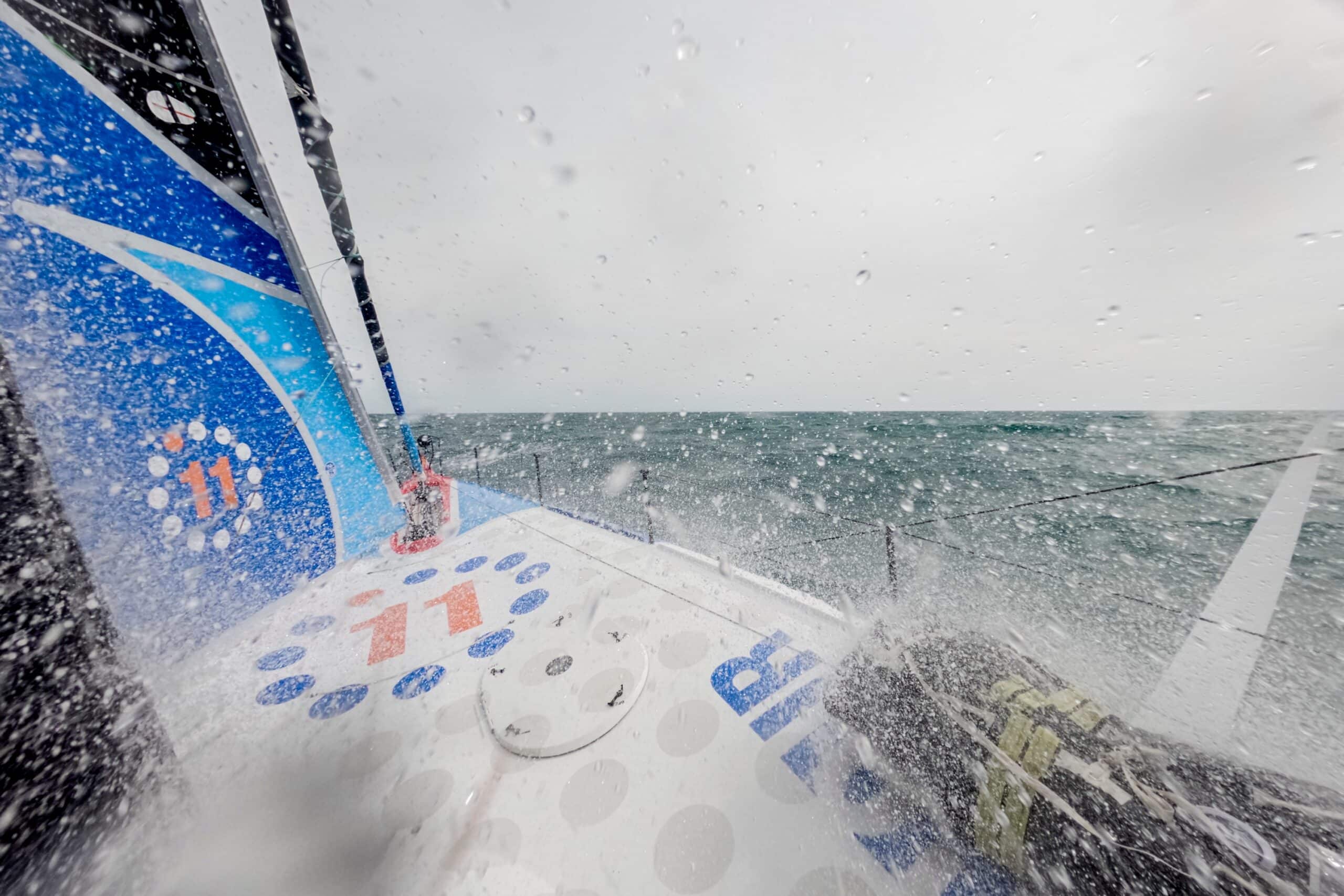LEG 3 PREVIEW: FROM SOUTH AFRICA TO BRAZIL
 Cape Town, South Africa
Cape Town, South Africa  Itajaí, Brazil
Itajaí, Brazil
 Start February 26, 2023
Start February 26, 2023
 ETA April 1, 2023
ETA April 1, 2023
 Distance 12,750 nautical miles (14,672 miles/23,613 kilometers)
Distance 12,750 nautical miles (14,672 miles/23,613 kilometers)
Leg 4 of The Ocean Race 2022-23 from Cape Town, South Africa to Itajaí, Brazil is the first of the race’s two double-points scoring stages and takes the fleet on a monstrously long 12,750-nautical mile (14,672-mile/23,613-kilometer) – passage around the bottom of the world.
It is the longest ever leg in The Ocean Race history and is expected to take the teams almost five weeks to complete with the crews passing south of all three of the world’s southernmost capes: South Africa’s Cape of Good Hope; Australia’s Cape Leeuwin; and Chile’s Cape Horn off the southern tip of South America.
Points will be awarded based both on the order the boats cross the line of Longitude 143° East as they pass south of Australia, and on their finishing position in Itajaí.
The majority of the leg will be spent in the Southern Ocean – a vast and lonely expanse of open water beginning at 60° South and bordered by Antarctica in the south that forms an uninterrupted band around the bottom of the world.
Ravaged nonstop by vicious storms that circle the globe unimpeded, the Southern Ocean is notorious for the world’s strongest winds and largest waves – to say nothing of freezing air and water temperatures, as well as icy rain, sleet, and even snow. A more remote and inhospitable part of the world is hard to imagine.
Aside from the challenge of taking on such a hazardous passage the 11th Hour Racing Team crew will be painfully aware of the need to balance the desire to score the maximum points possible with the need to avoid injuring themselves or causing any serious damage to Mālama. A major breakdown deep in the Southern Ocean could prove to be hugely costly – both in terms of lost points and reduced repair time in Brazil.
After leaving Cape Town’s Table Bay the fleet will head south to round South Africa’s Cape of Good Hope. Crossing the meandering Agulhas Current can often be a tricky affair as the fast flowing ocean stream kicks up an unpredictable and unpleasant sea state.
From there the goal will be to get south as quickly as possible to minimize the number of miles sailed around the bottom of the world. The closer to the bottom of the globe the boats go, the shorter the circumference of the circular route they will have to sail, however the race organizers will likely set a virtual southern limit to keep the yachts north of the iceberg zone.
For most of Leg three the teams will be so far from civilization that any realistic chance of assistance is likely to come from a fellow-competitor. Along the way the fleet will race close to Point Nemo – a virtual waypoint calculated to be the furthest place on the planet from land, where the nearest human beings are the astronauts in the International Space Station around 250 miles (400 kilometrers) over their heads.
The importance of the Southern Ocean to the fine balance of the world’s climate system cannot be underestimated. As well as acting as a huge heatsink for the planet, the waters around the bottom of the globe also absorb huge amounts of carbon dioxide from the atmosphere.
Yet, because of its remoteness, little is known about the area in scientific terms – a problem The Ocean Race teams are helping to solve. Equipment carried aboard and deployed from the racing yachts records vital data about the temperature, salinity, and plastic content of the waters there – information that scientists can use to build a better informed picture of the world’s climate scenario.
After making their way three quarters of the way around the base of the world eventually the crews can turn north towards the exit to the Southern Ocean at Cape Horn – the world’s southernmost cape.
For mariners, a Cape Horn rounding is the stuff of legends and passing the lighthouse on Hornos Island on the remote and rocky Tierra del Fuego archipelago is a moment that no sailor ever forgets.
There will likely be some degree of relief amongst the teams to have left the Southern Ocean behind but there will be no time for relaxing or throttling back as the northerly route up the eastern seaboard of South America is no easy passage and previous editions of the race have seen the leg won and lost here.
Depending on the weather conditions, a decision will need to be made whether to pass inside or outside of the Falkland Islands archipelago and the crews will need to remain vigilant for sudden, strong, katabatic winds that can descend from the skyscraping peaks of Chile’s Andes mountain range.
The fleet will race along the coasts of Uruguay and Brazil on the way to the finish outside the Itajaí-Açu River where light winds can once more be an issue as the yachts approach the land.




